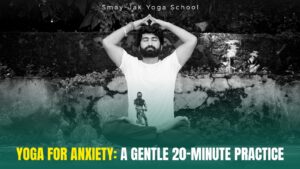A strong core is the foundation of physical stability and vitality. It not only supports proper posture and alignment but also plays a crucial role in preventing injuries and enhancing athletic performance. Yoga offers a holistic approach to core strengthening, focusing not only on the superficial abdominal muscles but also on the deeper stabilizing muscles that provide strength and support from the inside out. In this blog post, we’ll explore how yoga can help you build a stronger core and cultivate stability in both body and mind.
Understanding the Core
The core is more than just the six-pack muscles visible on the surface. It encompasses a complex network of muscles that stabilize the spine, pelvis, and hips, providing support for every movement we make. These muscles include the rectus abdominis, transverse abdominis, obliques, erector spinae, and pelvic floor muscles. Unlike traditional core exercises that isolate specific muscles, yoga takes a more holistic approach, engaging multiple muscle groups simultaneously to create functional strength and stability.
Benefits of a Strong Core
A strong core offers numerous benefits beyond aesthetics:
– Improved posture and alignment: A strong core helps maintain proper spinal alignment, reducing the risk of back pain and postural imbalances.
– Enhanced stability and balance: Core strength is essential for maintaining balance and stability in various yoga poses and daily activities.
– Reduced risk of injury: A strong core provides support and protection for the spine and surrounding joints, reducing the risk of injury during physical activities.
– Support for functional movement: Core strength is essential for performing everyday tasks, such as lifting, bending, and twisting, with ease and efficiency.
Key Yoga Poses for Core Strength
Yoga offers a wide range of poses that target the core muscles and promote strength and stability. Some key poses include:
– Plank Pose (Phalakasana): Strengthens the entire core, including the abdominals, back, and shoulders.
– Boat Pose (Navasana): Targets the deep abdominal muscles while improving balance and coordination.
– Forearm Plank (Makara Adho Mukha Svanasana): Engages the core and stabilizing muscles of the shoulders and arms.
– Side Plank (Vasisthasana): Strengthens the obliques and improves lateral stability.
– Dolphin Plank (Makara Adho Mukha Svanasana): Builds strength in the core and shoulders while promoting shoulder stability.
– Core-engaging variations of traditional poses, such as Warrior III (Virabhadrasana III) and Tree Pose (Vrksasana), challenge balance and core stability.
Core-Focused Yoga Sequences
To maximize core strength and stability, incorporate core-focused yoga sequences into your practice. Here are three sequences to try:
1. Dynamic Core Flow: Begin with Sun Salutations to warm up the body, then flow through a series of core-strengthening poses, such as Plank, Boat, and Forearm Plank, coordinating movement with breath.
2. Core Stability Sequence: Hold static poses, such as Plank, Side Plank, and Boat Pose, for several breaths to build endurance and stability in the core muscles.
3. Power Core Flow: Combine strength-building poses with dynamic movement to build endurance and resilience. Include poses like Downward-Facing Dog to Plank transitions, Warrior III to High Lunge flows, and Boat Pose to Half Boat Pose variations.
Mindful Engagement of the Core
Mindful awareness is essential for maximizing the benefits of core-focused yoga practice. Focus on engaging the deep core muscles, such as the transverse abdominis and pelvic floor, rather than relying solely on superficial muscles. Use breath awareness techniques to deepen the connection to the core and maintain stability throughout each pose.
Core Strengthening Beyond the Mat
Core strength is not limited to the yoga mat—it’s an essential component of everyday movement and activity. Incorporate core engagement into daily activities, such as sitting, standing, and walking, to promote proper alignment and reduce strain on the spine. Additionally, include functional exercises, such as squats, lunges, and kettlebell swings, to further strengthen the core and improve overall stability and mobility.
Conclusion
A strong core is the key to physical stability, balance, and vitality. By incorporating yoga into your routine and focusing on core-strengthening poses and sequences, you can build functional strength from the inside out. Cultivate mindful awareness of the core both on and off the mat, and reap the benefits of improved posture, reduced risk of injury, and enhanced overall well-being. With dedication and practice, you can unlock the power of your core and build stability that radiates from the inside out.












